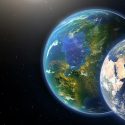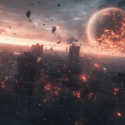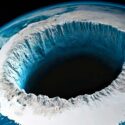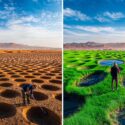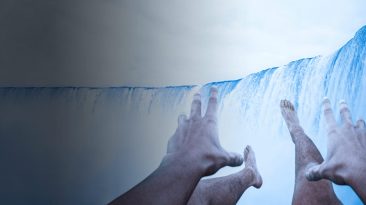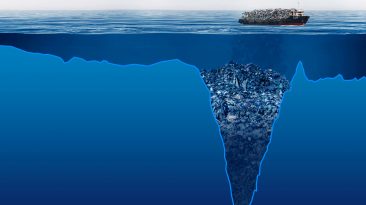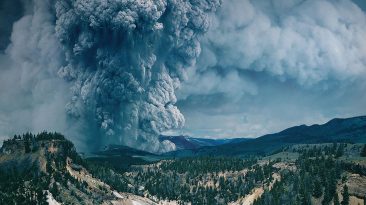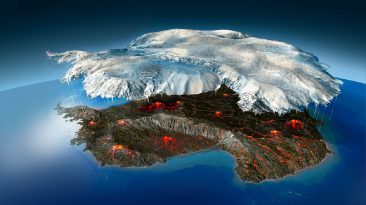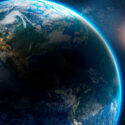There are over one million volcanoes on our ocean floor. And all of them suddenly started spewing out red-hot molten rock. The ocean is filling with lava. And nothing can prepare you for the devastation to come. But why would the water become toxic? How would Earth change shape? And what would happen to the coastlines around the world?
LAVA FLOWS
Many volcanos sit atop shifting tectonic plates, building pressure over years before they’re ready to blow. Scientists estimate that four out of five volcanic eruptions happen underwater. But for this event to be truly apocalyptic, we’d need to wake up volcanoes that have been dormant for over 10,000 years.
You’d see the most activity in the mid-Atlantic as these waking giants rip the planet apart. But underwater volcanoes don’t really erupt in epic explosions. Instead, they scatter lava across the ocean floor, rocking the submarine landscape.
ACID WATER
As more than a million underwater volcanoes spew out lava in the water, that water would become acidic. All thanks to the devasting amount of carbon dioxide coming from eruptions. Organisms would die off quickly in this harsh environment. This is where the food chain would break. But how would this affect life above water?
NEW LANDMASSES
The lava would build and build, creating new landmasses that would tower over the waves. We might see islands pop out of the oceans everywhere. Experts think this is the process that gave us Iceland 70 million years ago. But if the magma didn’t keep flowing, these newly formed islands could slowly be lost to erosion from the winds and waves.
ASH
Anything that withstands this constant erosion would be covered in ash. Usually, each of these islands would contain the ingredients to host a diversity of life. Islands play a vital role as natural resting places and breeding grounds for migratory birds. And new microscopic life could thrive in the volcanic soil.
But if every underwater volcano was constantly erupting non-stop, all that ash would stop both birds and organisms from finding a home in these areas. And the devastation wouldn’t end there. The poisonous compounds would be spread across entire regions and over continents. In 2009, an eruption in the Tonga archipelago rocketed ash to an island over 63 km (39 mi) away.
TSUNAMIS
Even worse, with the pressure released from all these volcanos erupting, tsunamis could rise and devastate coastlines. Hunga Tonga-Hunga Ha’apai burned so hot following its 2021 eruption that it blazed a crater into the ocean floor. It also triggered a tsunami that flooded the islands of Tonga in minutes with over 18 m (60 ft) of water. Every nation surrounded by water would face the same risk during these violent global eruptions. But maybe you’d be safer further inland? Right?
LANDSLIDES
Meanwhile, underwater landslides could also destroy ocean life. All the rock and ash being sprayed out would change the face of the ocean floor. And many organisms wouldn’t be able to survive the changing conditions. The boiling waters would cook marine life, and their charred remains would float to the surface as an ominous sign of the dangers below.
Landslides above would also destroy island populations around volcanic chains. If the ancient submarine volcano known as Marsili, located in the Mediterranean, collapsed during the eruption, it could be disastrous. The tsunami generated could flood the coastlines of Italy. And that’s just one volcano. And all that tectonic energy released would mean even more earthquakes and tsunamis worldwide.
No matter where you live, you may not be safe in this new world. Each continent could be destroyed from below as the plates shift during the eruptions. Cities far inland could feel the effects as mountain ranges bulldoze entire regions and deserts are flooded. But what if you traveled to an even more dangerous planet?
Sources
- “‘Sharkcano’ Undersea Volcano Eruption Spotted From Space In Satellite Photo”. Elizabeth Howell. 2022. space.com.
- “Geology of the Deep”. 2022. education.nationalgeographic.org.
- “The Surprising Powerful Global Tsunamis Driven By Underwater Volcanic Eruptions”. Amy Blumenthal. 2022. preventionweb.net.
- “Underwater Volcanoes Are Deep-Sea Jungles, And They’Re Under Threat”. Robin George Andrews. 2021. vox.com.
- “Map Of The Week – Submarine Volcanoes”. 2019. emodnet.ec.europa.eu.



